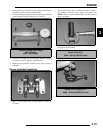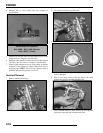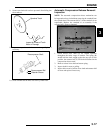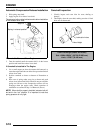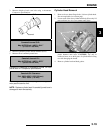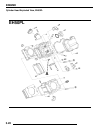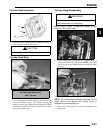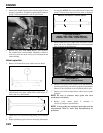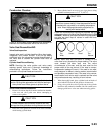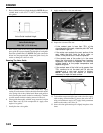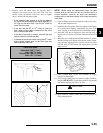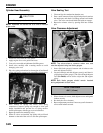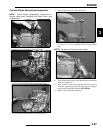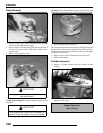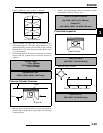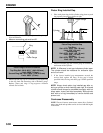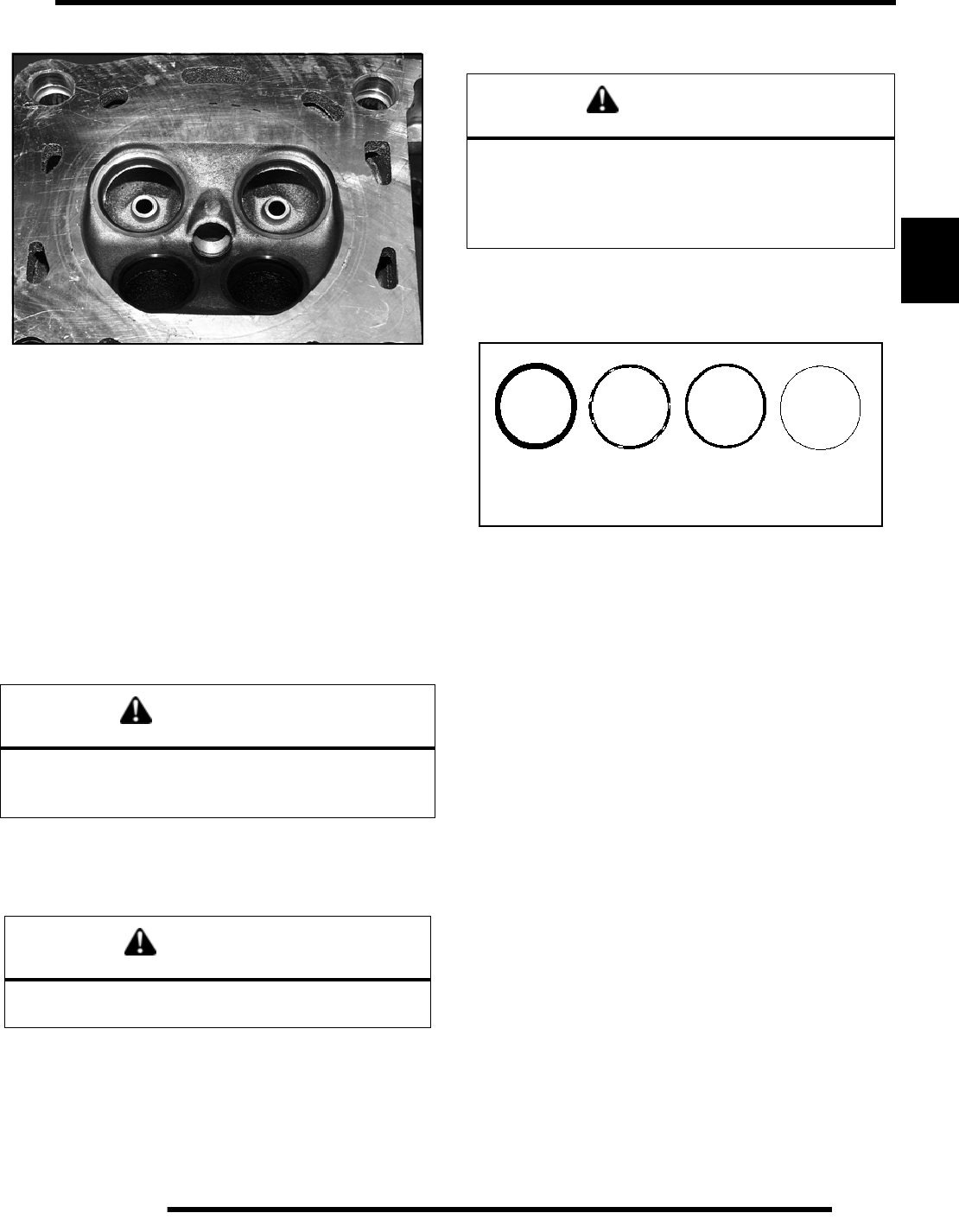
3.23
ENGINE
3
Combustion Chamber
Clean all accumulated carbon deposits from combustion
chamber and valve seat area with a soft wire brush.
Valve Seat ReconditionING
Valve Seat Inspection
Inspect valve seat in cylinder head for pitting, burnt spots,
roughness, and uneven surface. If any of the above
conditions exist, the valve seat must be reconditioned. If
the valve seat is cracked the cylinder head must be
replaced.
Cylinder Head Reconditioning
NOTE: Servicing the valve guides and valve seats
requires special tools and a thorough knowledge of
reconditioning techniques. Follow the instructions
provided in the cylinder head service tool kit.
Valve Guide Removal/Installation
1. Remove all carbon deposits from the combustion chamber,
valve seat and valve guide area before attempting to
remove valve guides.
2. Place new valve guides in a freezer for at least 15 minutes
while heating cylinder head.
3. Heat cylinder head in an oven or use a hot plate to bring
cylinder head temperature to 212
o
F (100
o
C).
Follow the manufacturers instructions provided with the
valve seat cutters in the Valve Seat Reconditioning Kit (PN
2200634). Abrasive stone seat reconditioning equipment
can also be used. Keep all valves in order with their
respective seat.
NOTE: Valve seat width and point of contact on the
valve face is very important for proper sealing. The valve
must contact the valve seat over the entire
circumference of the seat, and the seat must be the
proper width all the way around. If the seat is uneven,
compression leakage will result. If the seat is too wide,
seat pressure is reduced, causing carbon accumulation
and possible compression loss. If the seat is too narrow,
heat transfer from valve to seat is reduced and the valve
may overheat and warp, resulting in burnt valves.
1. When thoroughly heated, place cylinder head on blocks of
wood which will allow the old guides to be removed.
2. Using valve guide driver, drive guides out of the cylinder
head from the combustion chamber side. Be careful not to
damage guide bore or valve seat when removing guides.
CAUTION
Wear eye protection when performing cylinder head
service. Valve guide replacement will require heating of
the cylinder head. Wear gloves to prevent burns.
CAUTION
Carbon deposits are extremely abrasive and may
damage the valve guide bore when guides are removed.
CAUTION
Do not use a torch to heat cylinder head or warpage may
result from uneven heating. Head temperature can be
checked with a pyrometer or a welding temperature
stick. Wear the appropriate safety equipment for
working with heated metal.
Too Uneven Good Too
Wide
Narrow



